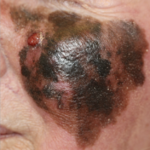 For those of you that have been following me for some time will know, my father was diagnosed with colorectal cancer in 2020 during the COVID-19 pandemic. His management including radiotherapy, chemotherapy and surgery and the management of subsequent complications also took place during both UK COVID-19 lockdowns. He then died last summer as the complications became unmanageable.
For those of you that have been following me for some time will know, my father was diagnosed with colorectal cancer in 2020 during the COVID-19 pandemic. His management including radiotherapy, chemotherapy and surgery and the management of subsequent complications also took place during both UK COVID-19 lockdowns. He then died last summer as the complications became unmanageable.
There has always been a suspicion that the COVID-19 pandemic contributed to his death. There is now an emerging body of evidence showing that this is indeed the case, at least for the 4 major cancer types of breast, lung, bowel and oesophageal cancer.
[Gheorge A, Maringe C, Spice J et al. Economic impact of avoidable cancer deaths caused by diagnostic delay during the COVID-19 pandemic: a national population-based modelling study in England, UK. Eur J Cancer 2021;152:233-242.]
There have been further studies also looking at the effect of COVID-19 on melanoma diagnosis, something dermatologists were aware of at the time of the pandemic but are now being confirmed in formalised studies published in peer-reviewed journals.
[Degeling K, Baxter NN, Emery J et al. An inverse stage-shift model to estimate the excess mortality and health economic impact of delayed access to cancer services due to the COVID-19 pandemic. Asia Pac J Clin Oncol 2021;17(4):359-367.]
More recently, a study was published looking at the premature mortality and economic costs of delayed melanoma diagnosis associated with the absence of routine medical examinations and severely restricted access to follow-up examinations for at least 4 weeks during the COVID-19 pandemic starting in March 2020.
[Maul LV, Jamiolkowski D, Lapides RA et al. Health economic consequences associated with COVID-19-related delay in melanoma diagnosis in Europe. JAMA Network Open 2024;7(2):e2356479.]
What did they look at?
They looked at cutaneous melanoma incidence rates (ie new cases) per European country from July 2021 to September 2022.
They then looked at treatment costs for melanoma and pre-pandemic melanoma incidence. Only patients aged over 18y with invasive primary cutaneous melanomas stage I to IV were included, including melanomas of unknown primary. Mucosal and uveal (of the eye) melanomas were excluded as their staging is different and melanoma-in-situ was also excluded.
What were their outcome measures?
They looked at the total burden of a delay in the diagnosis of melanoma during COVID-19 lockdown periods.
They measured this as direct and indirect costs (years of life lost and years lost due to disability) for Europe.
They also estimated the upstaging rate ie the classification of a cancer to a higher, more advanced stage due to postponements and clinic cancellations resulting in a delay in melanoma diagnosis.
What did they find?
Not surprisingly, they found that there were over 111,000 years of life lost and over 15,000 years lost to disability.
With a 17% upstaging rate, they estimated the additional costs of delayed melanoma diagnosis to be over US$7 billion, most of this being due to indirect costs.
Why are the costs so much?
This is because melanomas caught early tend to be thin (66% of melanomas diagnosed in the UK on the NHS are of stage 1) and rarely require anything beyond the initial surgery. However, more advanced melanomas are thicker and hence require more surgery, more diagnostic investigations such as sentinel lymph node biopsies, MRI and PET scans, more patient visits and more expensive treatments. These are the direct costs.
Indirect costs included sick leave-associated costs, unemployment and loss in productivity due to disability and premature mortality.
What are the limitations of the study?
It is easy to assume that the picture was the same for all countries but we know that in reality, the situation was very different. Each country in Europe has different rates of melanoma incidence. Also lockdown measures also varied between countries with some having no lockdown, one lockdown or two lockdowns like in the UK. Healthcare systems also vary between countries. Also how an individual melanoma progresses is a complex, inter-individual process.
In conclusion?
I think this study, amongst others, is starting to show us the full burden of the COVID-19 pandemic. We are starting to see the evidence that the indirect costs (excess cancer-related deaths, disability, unemployment due to disability, sick pay) associated with delayed cancer care far exceed those of COVID-19 deaths.
It is therefore important that if and when the next pandemic looms, we learn from this, improve public health and preventative medicine and put in place policies to ensure medical services for cancer can continue.
Kind regards,
Sandy
Dr Sandy Flann, Consultant Dermatologist.
